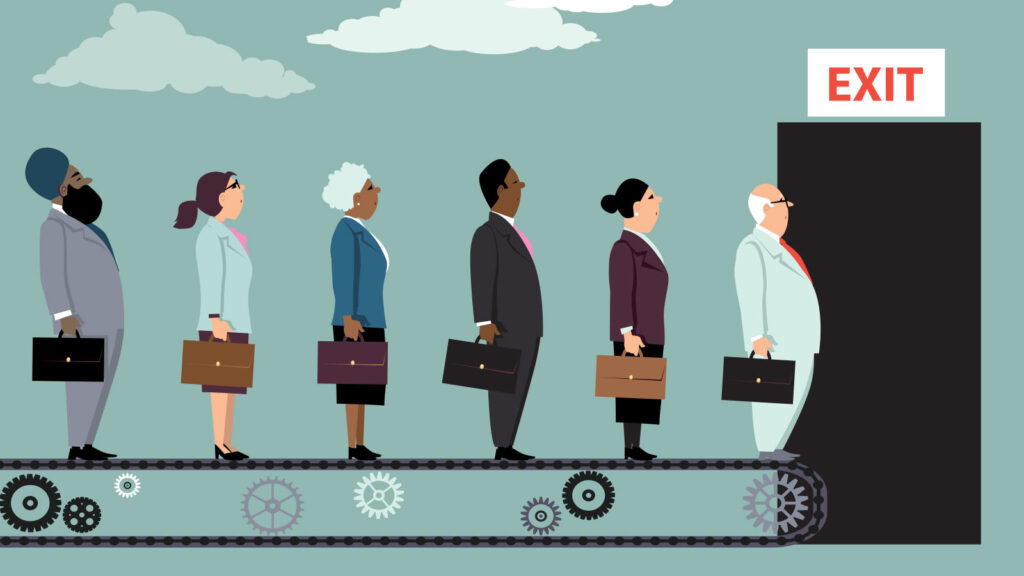
Julie Molnar | May 16, 2022
These days, talent is hard to come by – and even harder to keep. We’re undergoing the biggest talent attraction shift in more than 50 years. It’s a job seekers’ market. Everyone knows someone who has left a job, is looking for a new one, or is contemplating a career change.
As the employee-employer power shift continues, your organization’s success relies on building authentic, caring relationships with your employees – relationships that ultimately result in happier, fulfilled and more engaged humans, on and off the clock. Workers want to feel that you genuinely care about them. Not just professionally either, but also personally.
So it only makes sense that better understanding – and responding to – employee perceptions and employee feelings (the F-word) should be top-of-mind as you navigate the rocky terrain of today’s employee engagement and retention challenges.
Why Should You Care?
In a recent survey* conducted by Falls & Co. Employer Branding/Employee Experience group, half (50%) of U.S. employees surveyed responded they have experienced workplace burnout in the past year. And fewer than one in four U.S. workers feel strongly that their organization cares about their well-being, according to results from a recent Gallup** poll, marking the lowest percentage of employee dissatisfaction in nearly a decade. That’s important because employees who strongly agree their employer cares about their overall well-being are:
- 71% less likely to report experiencing excessive burnout
- 69% less likely to actively search for a new job
- Five times more likely to strongly advocate for their company as a good place to work and to strongly agree they trust organizational leadership
- Three times more likely to engage at work
- 36% more likely to thrive in their overall lives
Well-Being = The Whole-Being
Because work and life have never been more blended, employees’ well-being has never been more important or noticeable. Post-COVID, well-being is truly about the employees’ whole-being as a human. This approach considers both physical needs and desires for compassionate connections in all aspects of a company’s culture. If they aren’t, employees’ displeasure will lead straight to today’s hot job market and into the waiting arms of another hiring organization.
For many employers, the “new” whole-being employee experience reality is a demanding path to traverse. It supersedes conventional office perks and thoughtful recognition programs. These formerly surefire ways to retain top talent no longer work in the long-term.
The advantages of flexible working arrangements – sometimes even inverting work hours – are already woven into the new employment dynamic. So is the wider world of employment opportunities for companies embracing some version of remote working. Essentially, these are all now table stakes in today’s employee benefits package. If you aren’t offering them, you can’t compete and could be perceived as an employer that doesn’t support employee balance and well-being.
The Employer’s Role
As company leaders respond to this power shift, they’re paying attention to an array of workplace culture tools and practices once considered “fluffy.” But given today’s employment climate, these tactics have moved beyond the “soft skills” category and are necessary components of the talent and culture landscape. If you want to attract and keep employees, you’ll quickly learn you need sharpened people-related competencies at all levels of your organization.
Consider these important, employee wellbeing initiatives growing in popularity among culture-savvy employers:
Employee Resource Groups
Employee-run groups (ERGs) are communities that support the development of employees who share a social element of identity, whether it’s religion, ethnicity, interests, age, gender or other factors. These could include a woman’s network, a sustainability task force or an LBGTQ network, to name just a few examples.
ERGs are gaining popularity because they build high-trust relationships that help employees and organizations flourish. They foster a sense of belonging and inspire conversation around personal or career development by creating a safe space where employees can bring their whole selves to the table. They build relationships among peers with like-minded interests and experiences, giving workers a stronger connection to the workplace and those in it.
Coaching
Once reserved for the C-suite, coaching was viewed as a punitive action used to help someone “fix” a challenge or issue. As a result of COVID, the mindset about, and desire to, receive workplace coaching has evolved. More individuals want to engage in coaching to improve their work-life balance and increase self-esteem and self-confidence. Younger generations are driving the growing request for coaching as they seek fulfillment and success in life, including in their career and personal relationships.
Balancing Boundaries
Today, it’s likely you and your managers daily deal with employees in different environments – hybrid, remote and in-office. The stress of balancing all these workers’ varying needs and schedules lands directly on those who lead and manage teams – and puts their Emotional Intelligence (EI) muscles to the test.
It’s essential to ensure managers avoid burnout. That’s why more employers are offering EI training to assist managers and leaders with addressing their renewal needs while also tackling the needs of their direct reports. This training also helps grow social awareness skill sets, including empathy, that’s necessary when building relationships with others.
Making It Happen
The working world and employment landscape changed faster than anyone could have predicted. We are in an era where the lines between professional and personal lives intersect closer than ever before – and where employees have the bargaining power and ability to easily land new positions in today’s job market.
That’s why pausing to consider how your organization approaches the employee experience is critical. Are you focusing on their whole-being and making your organization complete? Are you consistently considering how to improve employee wellbeing?
Today, these concepts aren’t mutually exclusive. Happy employees make for healthy companies. And it’s up to you, the employer, to pave the way.
Ready to meet the challenge? Download Falls & Co’s eBook, Your Business: COVID’s Impact on Evolving Employee Expectations, to see what else our survey uncovered.
About the Research
* Falls and Co.’s Employer Brand/Employee Experience practice group recently surveyed hundreds of full-time, white-collar workers across the U.S.
**The Gallup poll discovery is based on a random sample of 15,001 full and part-time U.S. employees who were surveyed in February 2022.

